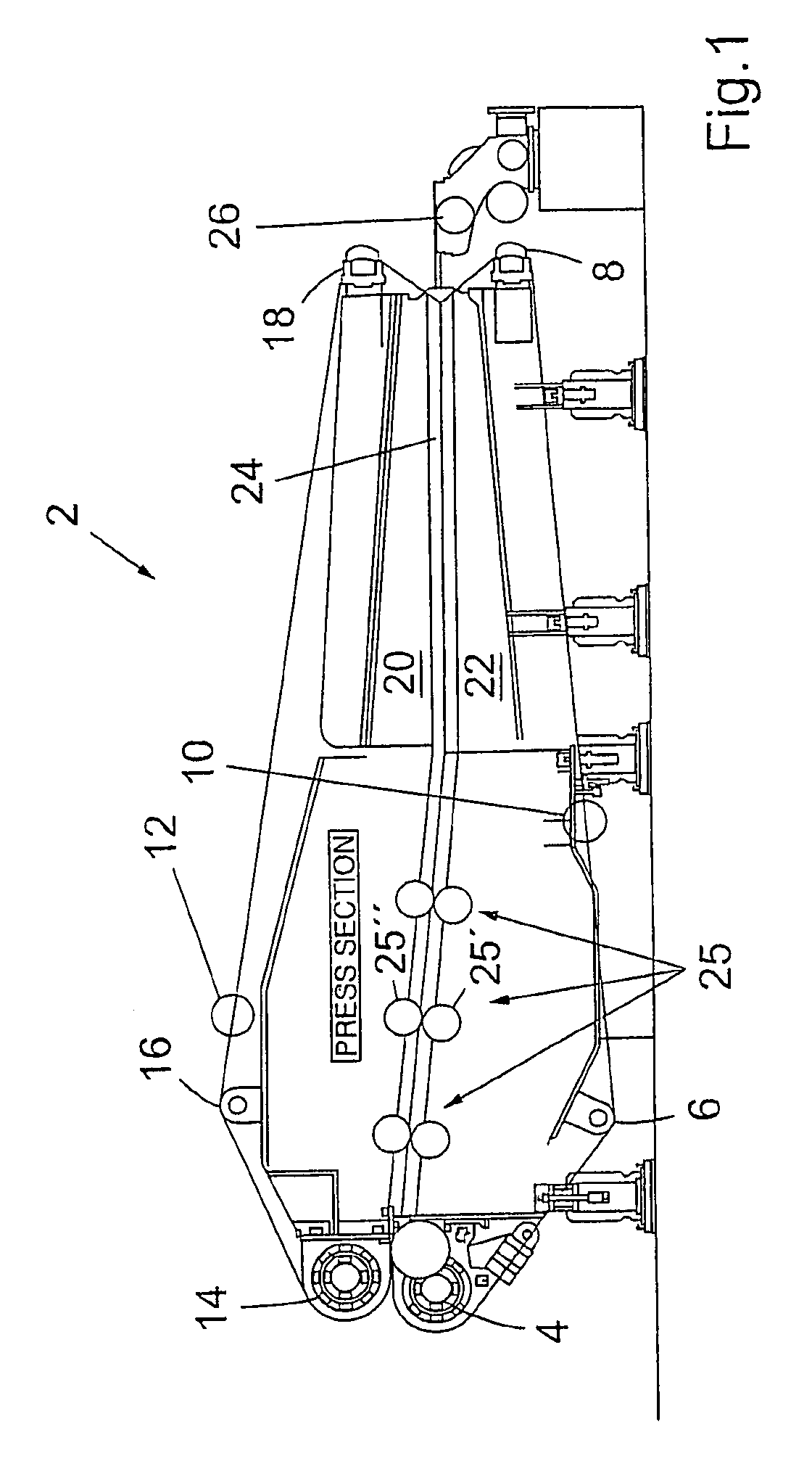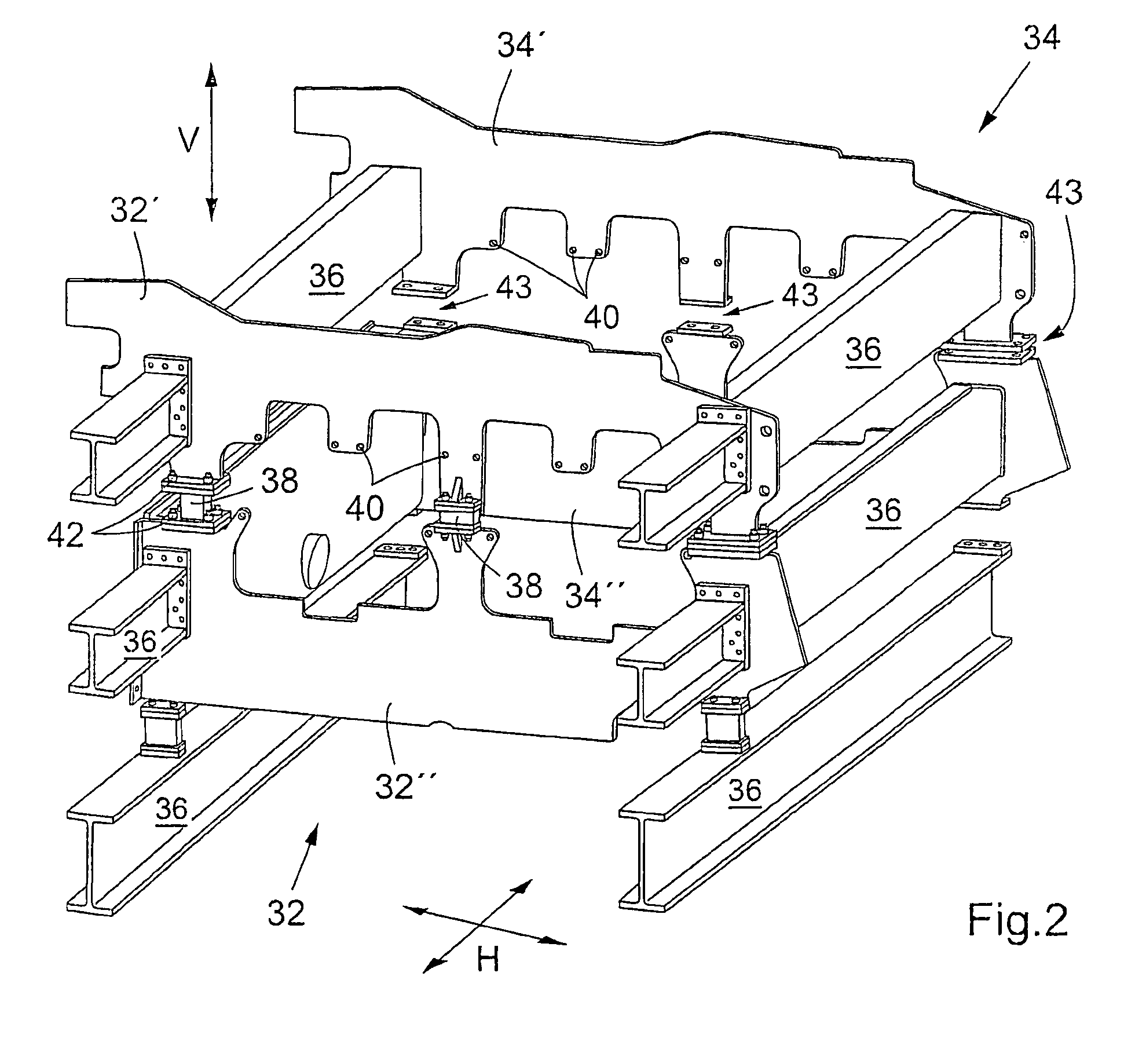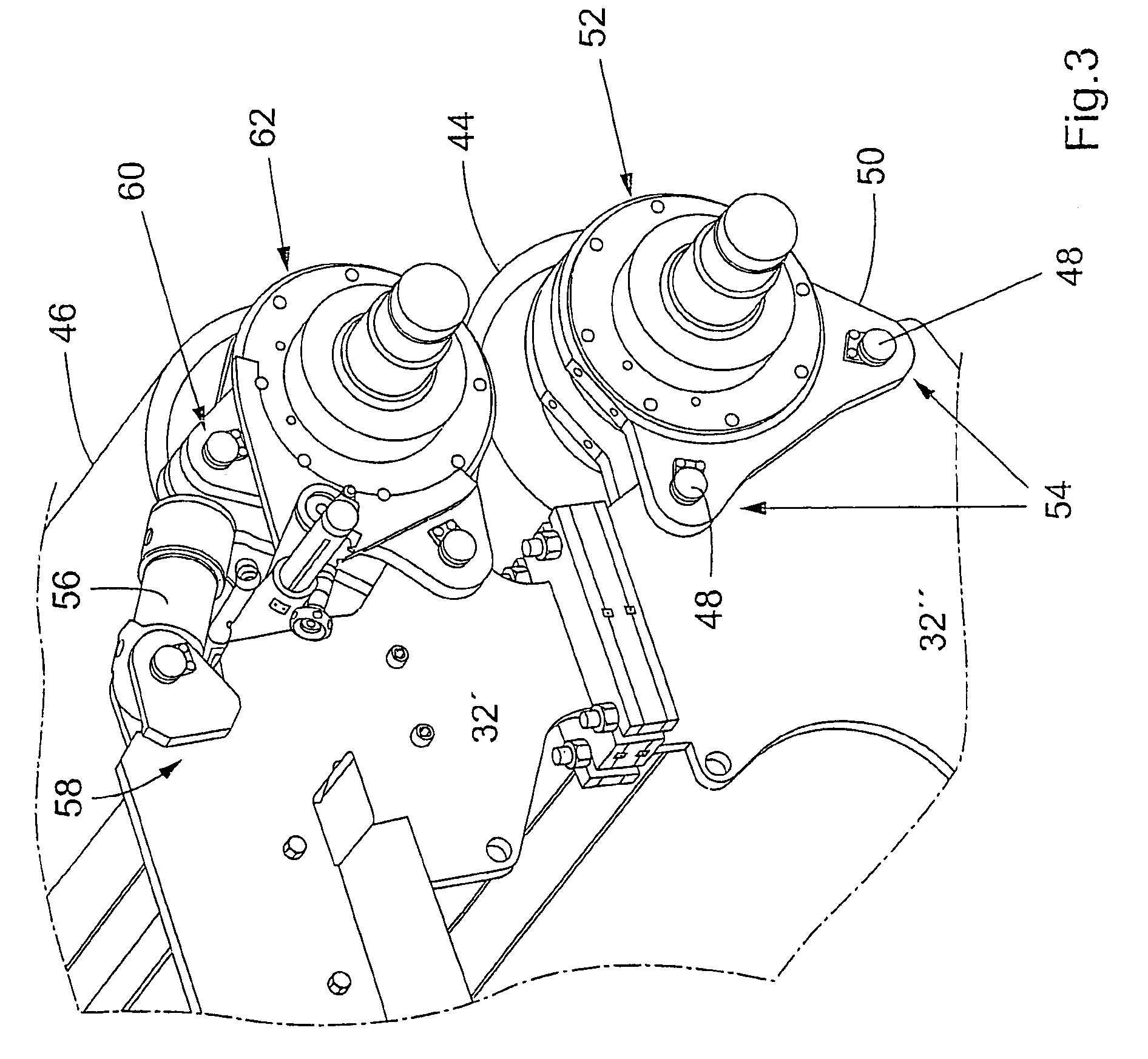Twin-wire press
- Summary
- Abstract
- Description
- Claims
- Application Information
AI Technical Summary
Benefits of technology
Problems solved by technology
Method used
Image
Examples
Embodiment Construction
[0018]FIG. 1 shows a twin-wire press 2 according to the present invention. The twin-wire press 2 comprises three lower rolls, namely, a drive roll 4, a control roll 6 and a tensioning roll 8. An endless lower wire 10 runs in a path around the lower rolls, 4, 6 and 8. In a corresponding manner an upper endless wire 12 runs in a path around three upper rolls, namely, a drive roll 14, a control roll 16 and a tensioning roll 18. An upper dewatering table 20, that supports the upper wire 12, and a lower dewatering table 22, that supports the lower wire 10, forms the dewatering space 24 between the wires, 10 and 12, in which the fiber suspension / web M is dewatered. “Press section” refers to an ordinary roll arrangement according to the state of the art that can involve a plurality of roll pairs 25, such as schematically shown in FIG. 1. An inlet box 26 is arranged at one end of the press.
[0019]FIG. 2 shows a frame for a twin-wire press described with reference to FIG. 1, mainly intended a...
PUM
 Login to View More
Login to View More Abstract
Description
Claims
Application Information
 Login to View More
Login to View More - R&D
- Intellectual Property
- Life Sciences
- Materials
- Tech Scout
- Unparalleled Data Quality
- Higher Quality Content
- 60% Fewer Hallucinations
Browse by: Latest US Patents, China's latest patents, Technical Efficacy Thesaurus, Application Domain, Technology Topic, Popular Technical Reports.
© 2025 PatSnap. All rights reserved.Legal|Privacy policy|Modern Slavery Act Transparency Statement|Sitemap|About US| Contact US: help@patsnap.com



